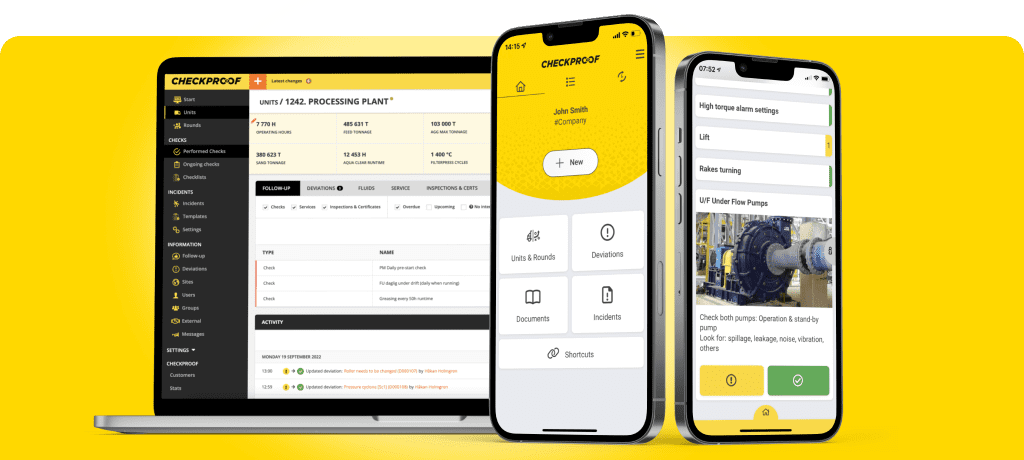Upcoming event
If your business relies on skilled and experienced frontline workers, you’re probably struggling with the same challenges as many of your industry peers: How can you replace the generation of workers now reaching retirement age? And how do you ensure you don’t lose the valuable knowledge they’ve gathered through the years?
Filling the shoes of workers who know their ready mix plants, aggregates quarries, and asphalt plants like the back of their hand is no easy task. The current skills shortage, with 77% of employers reporting difficulty filling roles, certainly doesn’t help.
Across the heavy industry landscape, employers are struggling to attract and retain new generations of employees. According to a recent McKinsey survey, sectors such as mining, oil & gas, construction, and manufacturing are considered significantly less appealing to talent under 30 than for example financial services, tech, or healthcare. As many as 71 percent of mining leaders say this talent shortage is preventing them from reaching their production targets and strategic objectives.
Lack of skilled workers affects workplace productivity and safety
To Joe Cage, Customer Success Manager at CheckProof, the survey results are not surprising. Joe has worked at several sites and quarries in the UK aggregates industry, and realizes that frontline jobs might not appeal to the tech-savvy youth of today – at least not at first glance:

– Long shifts of heavy manual labor outdoors in all kinds of weather might not seem like a promising prospect. But for someone who’s interested in problem-solving and prefers practical work to sitting behind a desk, these jobs offer a wealth of opportunity. You’re offered plenty of training and a clear career ladder if you stay on.
What do companies do if they fail to fill their vacancies – and what are the consequences?
– They’re forced to resort to the bare minimum in terms of equipment maintenance, which affects both productivity and safety standards. To avoid these issues, companies tend to hire contractors as a temporary solution. But although a contractor might know how to operate a particular machine, they don’t know the ins and outs of your specific site. And since you’re not guaranteed to get the same person each time, you might end up having to explain your routines and safety hazards from the beginning to a new person every week, Joe explains.
4 ways digitalization helps mitigate the impact of skills shortage
In his current role with CheckProof, Joe helps heavy industry businesses leverage digital technology to improve operational efficiency, routine compliance, and resource optimization. As a bonus effect of making the transition from pen and paper to digital routines, these companies also become better prepared to tackle the challenges linked to the skills shortage and the generational shift. How? Below, Joe shares some examples.
1. Digital SOP (Standard Operating Procedure) in the palm of your hand
A digital platform lets you create detailed and interactive checklists, including photos, videos, and step-by-step instructions, for all sorts of tasks and routines around your sites. And with today’s mobile devices, frontline staff can carry these digital SOPs around in their pockets.
Digital platforms also enable you to build up a record of documented tasks over time. For example, when the first frost hits and everything freezes up, you can go back and see what you did last year in the same situation. Knowing how your routines need to adapt to the weather, you can create a separate winter checklist for the cold season.
2. Transfer of knowledge that reduces key person dependency
How much of the vital knowledge on how to operate your sites is kept exclusively in the heads of your most experienced staff members? I’ve personally received text messages from former colleagues years after I’ve left a job, with questions on how to do some specific task. By digitizing all necessary routines, you make sure important information is available even if a key person is absent or leaves your company.
Start by creating checklists for the most important tasks around your sites, like safety routines or checks at the start and end of each day. Then you just keep building up your internal knowledge bank over time. As soon as you find crucial information, add it to your system. Even with a clear manufacturer manual, there are always tricks that are unique to your site, so make sure your checklists are detailed and customized.
3. Quick onboarding of new hires and contractors
With access to detailed instructions for all tasks on their mobile devices, newly hired employees – as well as temporary contractors – are able to do things correctly from day one. This reduces onboarding time, as well as the risk of hazardous mistakes.
4. Stronger employer brand
Young people are so used to technology and apps. They’ve grown up with it. Pen and paper routines would be completely alien to them. Digitalization isn’t just about being efficient. It’s also a key part of being a modern and attractive employer in today’s job market.
Your guide to successful digital transformation
Although the benefits of digitalization are clear to most businesses, the implementation process can be challenging. Get best practices and avoid common mistakes in our guide on how to digitally transform your heavy-industry business in 6 simple steps.
Want to know what CheckProof can do for you?
CheckProof's easy-to-use app makes it easier to do the right thing at the right time. Discover how you can run world-class maintenance that is both cost-effective and sustainable.

Empowering Maintenance Teams – Building Accountability for Operational Excellence

Digitizing Maintenance Routines for Resilience and Efficiency

Predictive vs Preventive Maintenance Explained

Seamless Workflows: Optimizing data collection with CheckProof and ERP Systems

The Importance of Quality Control

Combining Maintenance and HSEQ workflows can be a game changer

Benefits of Using RFID for Preventative Maintenance

Importance of Routine Maintenance

Staying on top of Regulatory Compliance for the Heavy Machinery Industry






